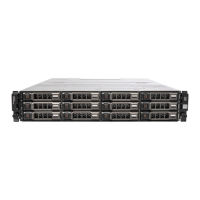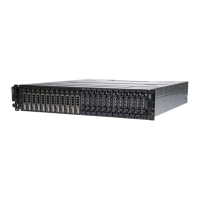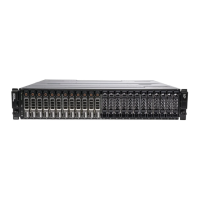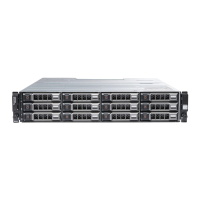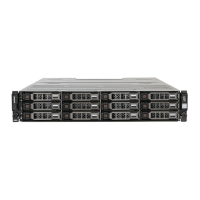Planning for Hyper-V: PowerVault™ MD3200 and MD3200i Series of Arrays
Page 9
percentage of the overall load (usually 80 percent, by default). Because iSCSI traffic is unicast traffic
and can typically use the entire link, disable unicast storm control on switches that handle iSCSI traffic.
However, the use of broadcast and multicast storm control is encouraged. Refer to your switch
documentation for information on disabling unicast storm control.
Jumbo Frames
Most enterprise gigabit-Ethernet equipment provides some support for jumbo frames. Enabling jumbo
frames accelerates iSCSI performance by about 5 percent and reduces server CPU utilization by 2
percent to 3 percent with standard or smarter NICs. Enable jumbo frames on the switch ports that
handle iSCSI traffic. In addition, if a server is using a software iSCSI initiator-and-NIC combination to
handle iSCSI traffic, you must also enable jumbo frames on the NICs to obtain the performance benefit
and ensure consistent behavior.
Note: You must enable jumbo frames throughout the entire IP SAN from the NICs, switches,
and array ports; otherwise, behavior might be inconsistent. To simplify troubleshooting
initial deployments, make sure that the NICs, switches, and storage arrays are fully
operational before you enable jumbo frames.
IP SAN Optimization for Throughput and I/Os
When designing your IP SAN, review the various factors in your network and the applications that you
are using. Consider these general rules when you design your IP SAN.
To maximize the data throughput of your storage array, all data ports need to be used. If your
application is I/O intensive, use an iSCSI offload NIC. Consider manually balancing your virtual disk
ownership so that no single controller is processing an excessive amount of I/O relative to the other
controller. The Dell PowerVault MD3200i storage system supports active/active controllers, with each
controller being able to simultaneous process I/O. The asymmetric design of the controllers means that
a virtual disk (logical unit number or LUN) is owned by a controller, and all I/O access to the virtual
disk is only possible through the owning controller. To take advantage of both the controllers for I/O
access, distribute virtual disks among the controllers and modify them to balance I/O access so as to
balance controller utilization.
Layer 3 Optimization
Differentiated Services (DiffServ) provide a good method for managing your network traffic. Some
switches have a proprietary implementation of DiffServ called Quality of Service (QoS). DiffServ uses
the Differentiated Services Code Point (DSCP) to distinguish between service levels of each IP
connection. These service-level agreements are on a per-hop basis (PHB). As such, within the internal
corporate network, traffic flows can be predictable, but after a wide area network (WAN) link leaves
the company, the service-level agreements are no longer valid. Four levels are typically used with
DiffServ:
• Default PHB – Typically this level is best-effort traffic.
• Expedited forwarding (EF) PHB – Good for low-loss, low-latency traffic.
• Assured forwarding (AF) – Behavior group.
• Class selector PHBs – Maintain backward compatibility with the IP precedence field.
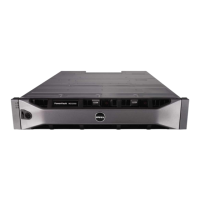
